One family chose to visit the beach while on vacation, which is what many tourists do. They wanted to see the sights and relax, thinking it was a normal day. However, their son then felt something in the water almost tug at him, trying to pull him in. What was it? Could it harm the boy and others?!
Something Stirs
The water moved from the light’s reflection, making it seem like something was underneath. Then, something touched the boy’s foot, making him lose his balance. As he got back up the stairs, he worried if he was safe from the grasp. He needed to see what grabbed him but wasn’t prepared for its size!
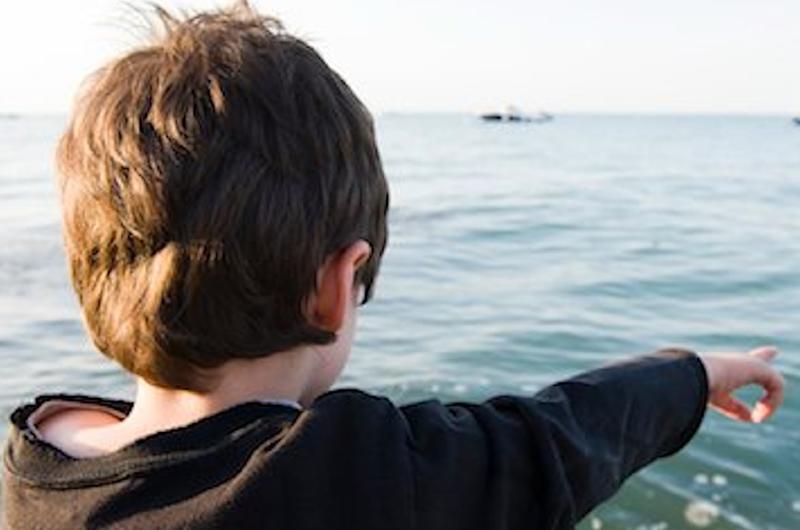
Something Stirs
The Legendary Creature
La Gomera is well-known for its beautiful beaches and a picturesque landscape. As part of the Spanish Canary Islands, tourists come from all over the world. Still, no one had ever seen something like that, making rumors spread about the creature living in the shallow waters of the beach.

The Legendary Creature
Beneath the Waves
Joel was enjoying his vacation at the Valle Gran Rey Resort. However, he soon met with a horrific sight. The family wanted to surf that day, but he might not have been as excited if he had known what was beneath him as he played!
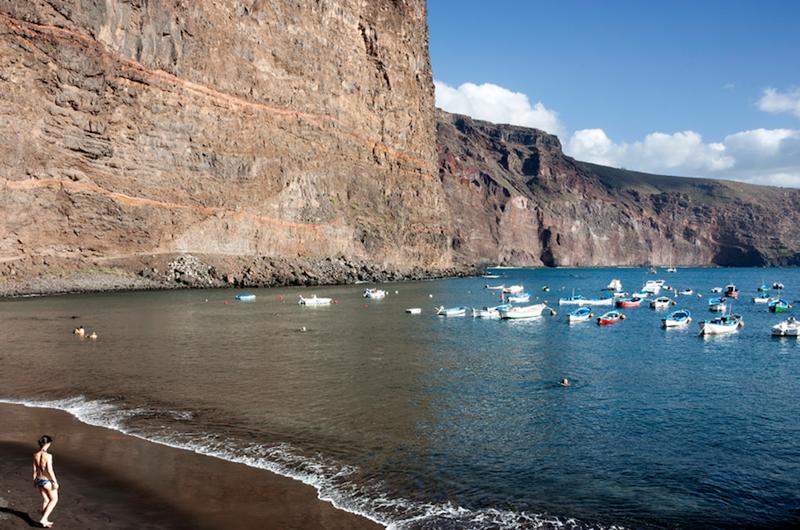
Beneath The Waves
The Footage
The boy was happy to catch the encounter on camera, but he didn’t know that his YouTube video was so popular that it went viral. It circulated on each social media platform and had well over 50 million views. It all starts with the boy in the water.
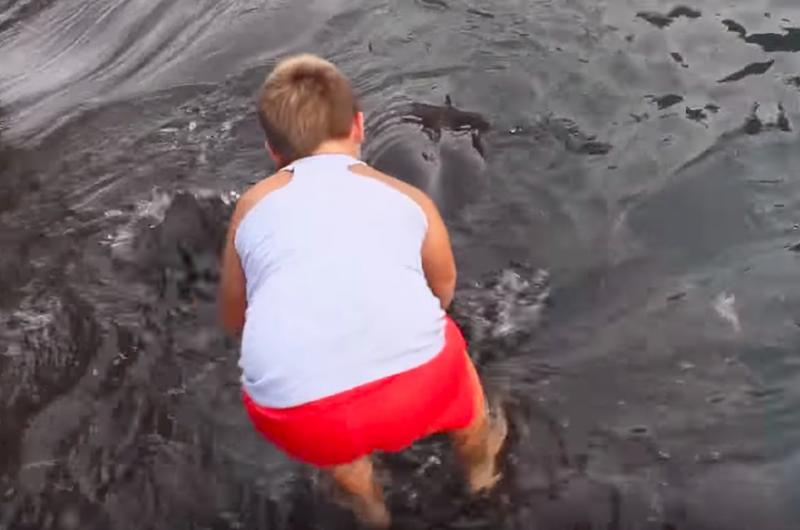
The Footage
Waiting and Watching
As Joel played in the water, something wanted to join in. The water frothed with something from below, heading straight for this young boy. It reared up its alien-like head, startling Joel. Was he able to see it? Did the creature get him?
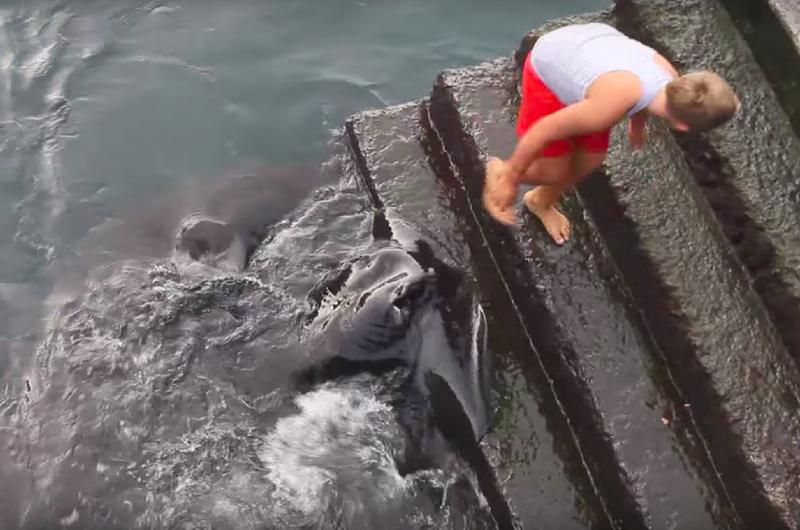
Waiting And Watching
The Illusion
It left just as quickly as it arrived, and people wondered if they had seen anything at all. Could their minds have played tricks on them? The current could have made it appear like something was there. However, they checked the camera’s footage and knew how lucky the boy was.
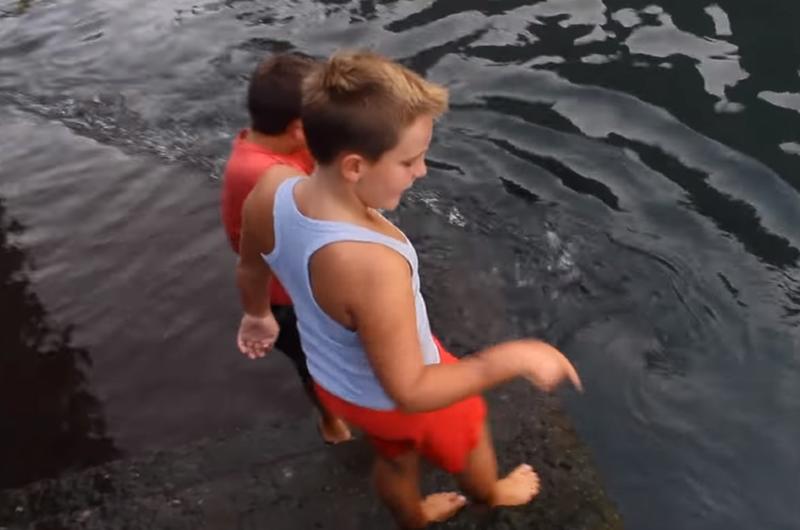
The Illusion
Black Mass Rises
The black water soon churned again, and this creature returned. It was horrible to have something touch you only in your mind, but when you realize it was real, it’s so much worse. What did Joel do?!
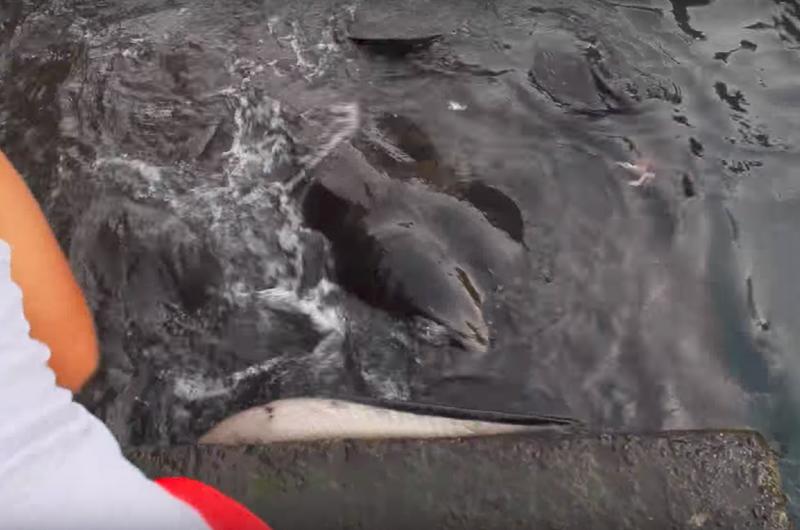
Black Mass Rises
Crowd Warnings
Everyone watching the event yelled at Joel to move away from the water. Could it be a shark out for blood? Regardless, Joel wanted to see what had tried knocking him in the water. He hoped it was a whale or something like that.

Crowd Warnings
What It Might Be
Humpback whales are known to come close to harbors. About 300 of them get spotted in New York’s harbor to scrounge for food. After assessing his situation, Joel knew it wasn’t a whale. It was too nimble for that! Still, Joel wanted to learn more.
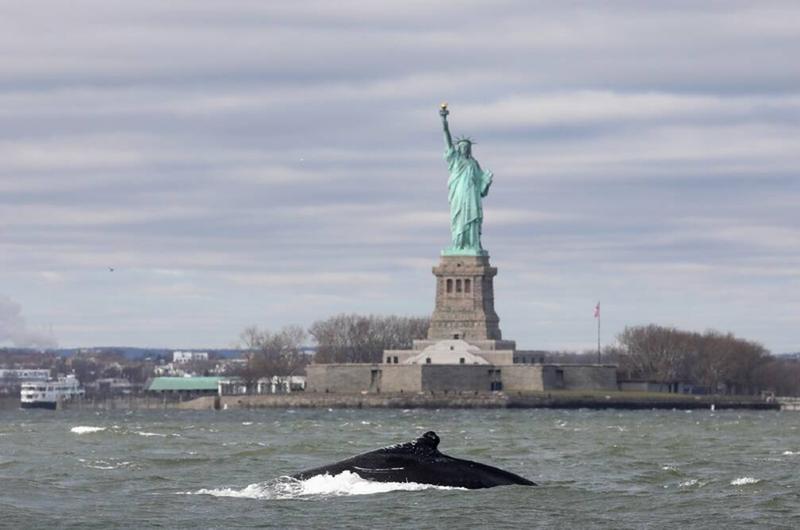
What It Might Be
An Unforgettable Scene
Joel rushed up the steps to be safe and get another view of the creature. He turned and met with a sight no one could forget. The enormous beast came from the sea and dragged itself onto the lowest step, nearly close enough to touch the brave boy!
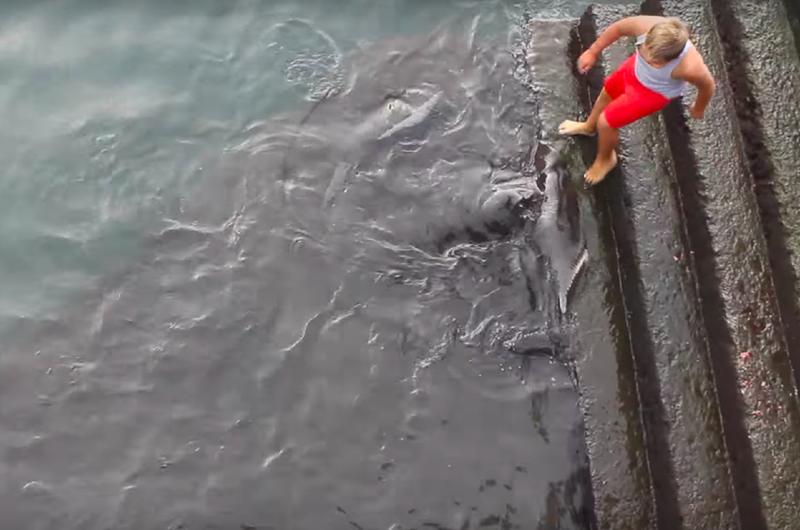
An Unforgettable Scene
Colossal
During the video, people could see the creature’s full size. Water rolls down its back, revealing the colossal and oily body. Joel hadn’t seen a beast like this before or had one play with him. Everyone stood around in shock and horror to see how the event played out.
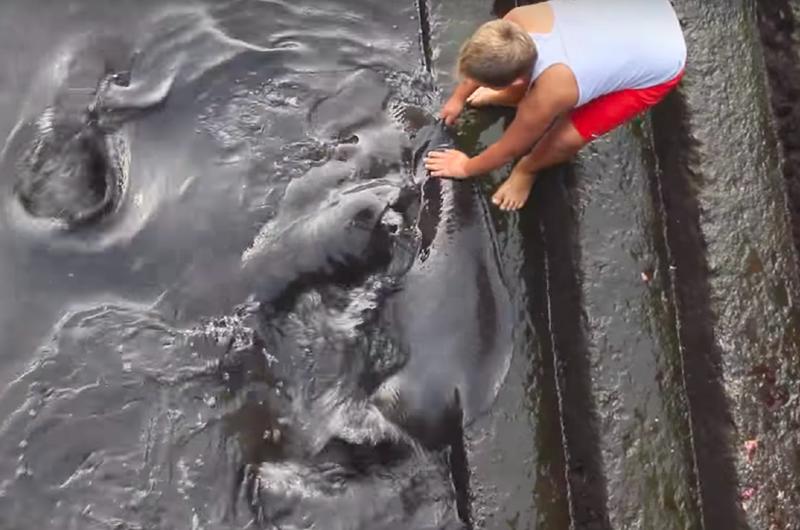
Colossal
An Unearthly Creature
This seemingly unearthly creature lurched forward, making the onlookers cry out in surprise because they saw what it was. A huge manta ray spanned 4 meters wide and rose up out the water like nothing. Was this a dangerous animal? Could it grab Joel?
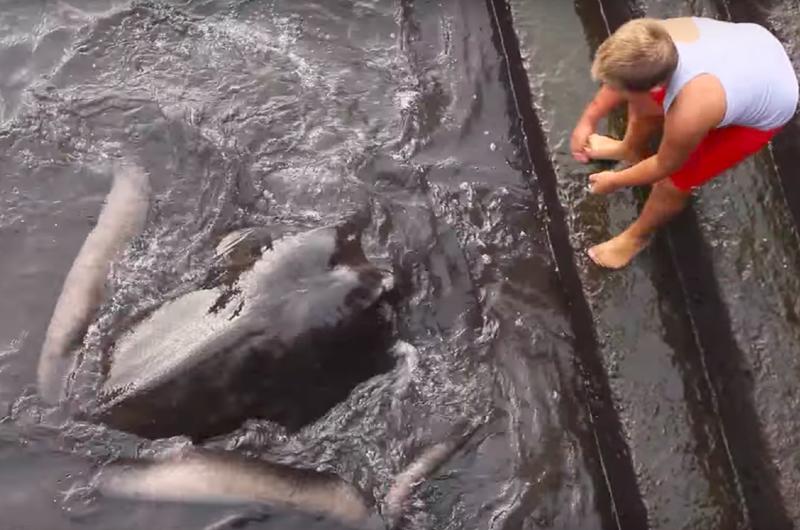
An Unearthly Creature
Outsized
It was a giant manta ray and was much larger than the boy, about triple the size! The people watching yelled at him to come back, but he wasn’t scared. In fact, he was smiling and hollered that it was okay. She wasn’t what they believed.
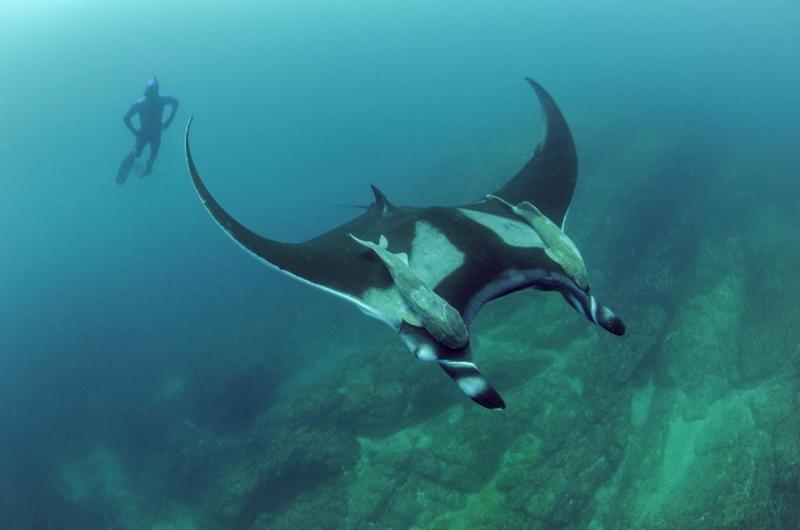
Outsized
The Hand Inside
Joel now knew what to do. He had been visiting this spot for a few days, so he understood what the manta ray wanted. The onlookers watched as this creature opened its mouth so that Joel could put in his hand and open up the fist.
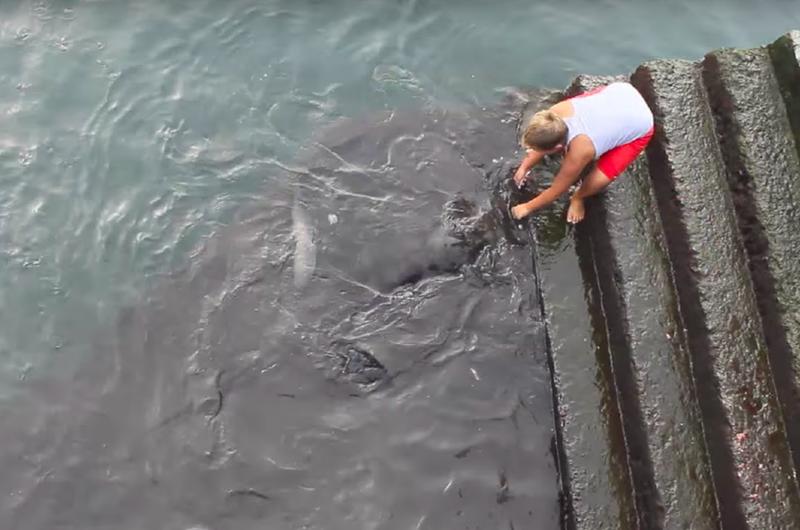
The Hand Inside
Sense of Danger
Everyone ended up watching the boy put his hand in this creature’s mouth. They wondered if he might get injured by this wild animal, but nothing bad happened. Still, no one could have known what happened next!
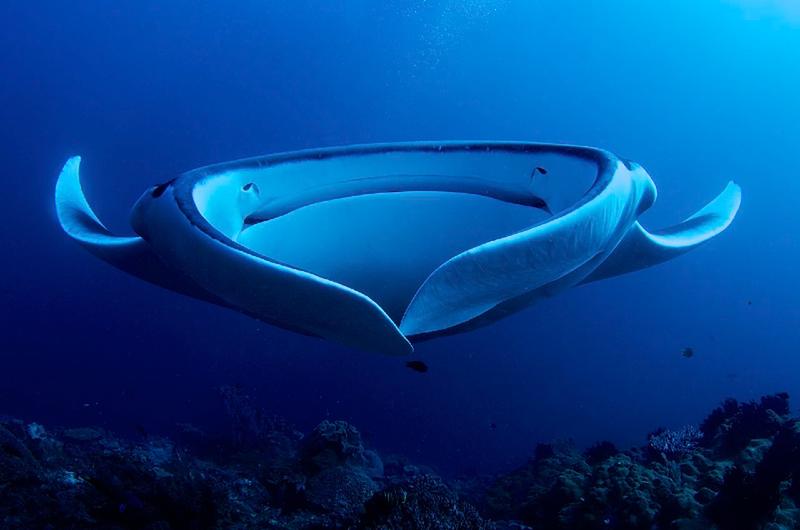
Sense Of Danger
Wild Animal
The wild animal actually held its mouth open and waited for Joel to remove his hand before clamping down on what he left. Everyone let out a gasp of relief when they noticed it was a beautiful scene that was occurring before their eyes.
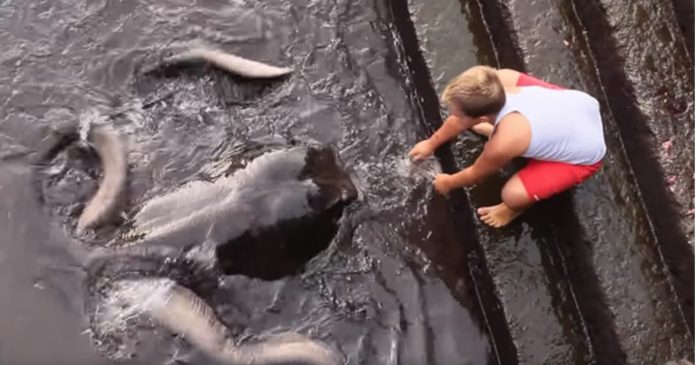
Wild Animal
Tame
This manta ray was clever enough to create a great way to enjoy a meal, and it was unafraid of humans. Brazenly, it went up to tourists, who fed it when they got over the shock of the beast. Joel had food in his hand to tempt it to him.
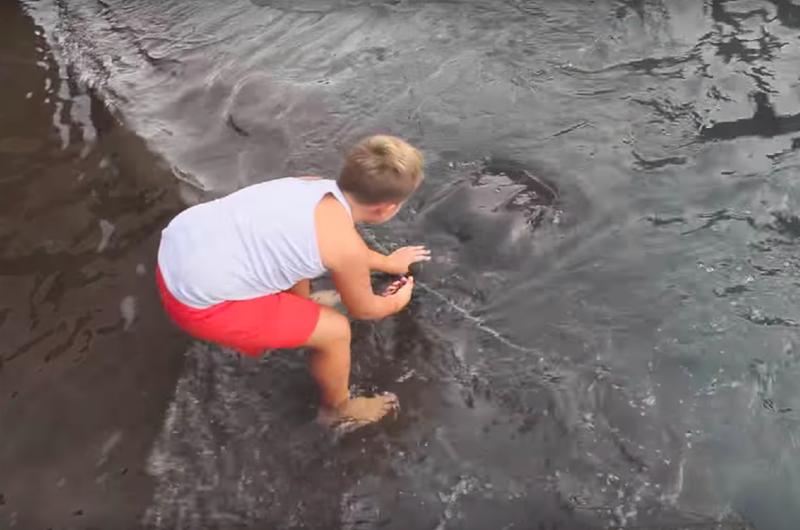
Tame
A Happy Manta Ray
After feeding the manta ray a few times, Joel petted its smooth back. The creature responded by waving his fin as though to say thanks. Then, it left and came back to get more petting, finally deciding to leave Joel alone for a bit.
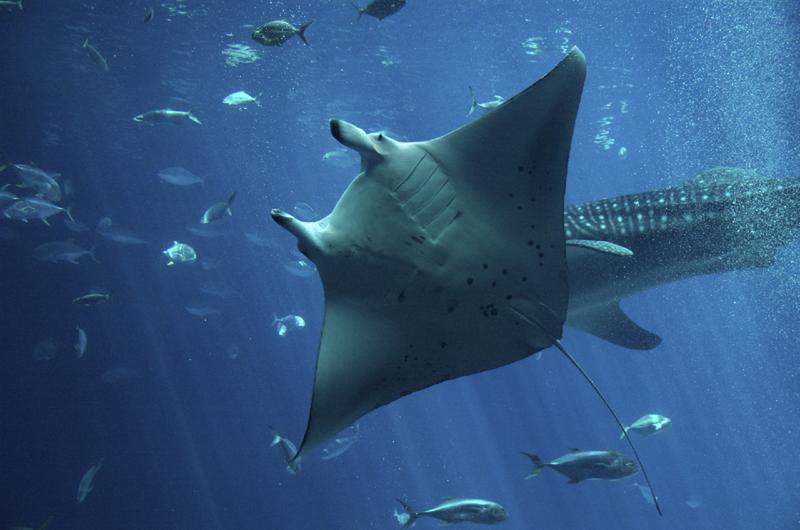
A Happy Manta Ray
Waiting for Some Treats
This fishing harbor was the site of many unbelievable scenes, and the Vueltas people weren’t shocked. They recognize the creatures and believe that the manta rays follow their fishing boats to get treats. However, some sailors and fishermen weren’t tolerant at times.
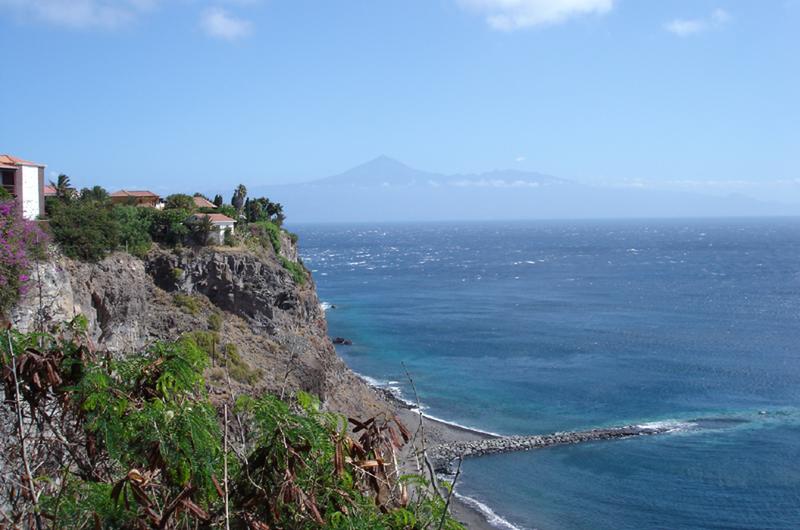
Waiting For Some Treats
The Bad Omen
Suspicions about manta rays persisted because they were so big and strong. Some sailors actually believe that they are bad luck. However, another side of this beautiful creature was revealed in 1978.
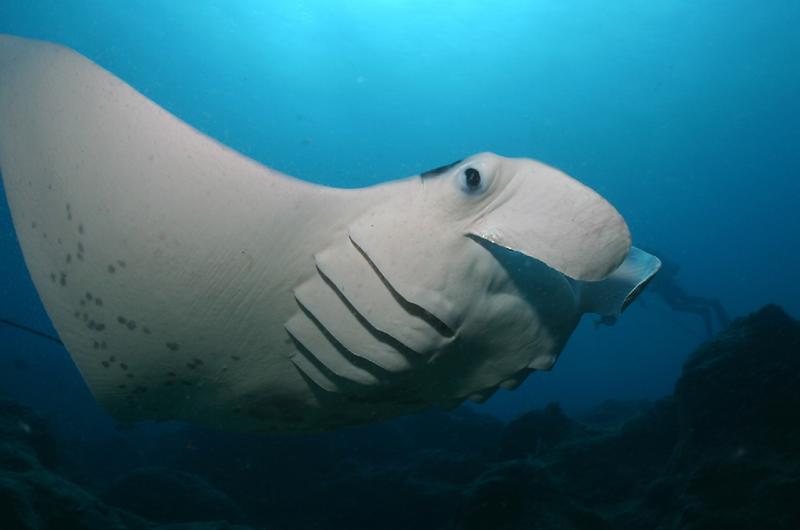
The Bad Omen
Friendly Giant
California divers began filming their interactions with manta rays, showing people that they weren’t a threat to humans and were gentle. Then, when social media became popular, people recorded and shared their experiences, as well.
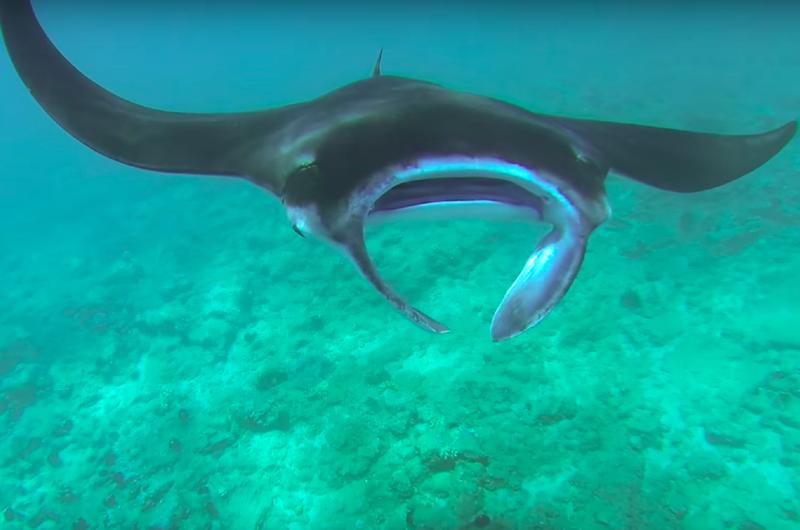
Friendly Giant
Needs Help
One video portrayed a group of divers finding a stingray barreling toward them. They soon realized that it had a net all around it, so they untangled the creature and let it swim away. This also highlighted a specific danger that manta rays face.
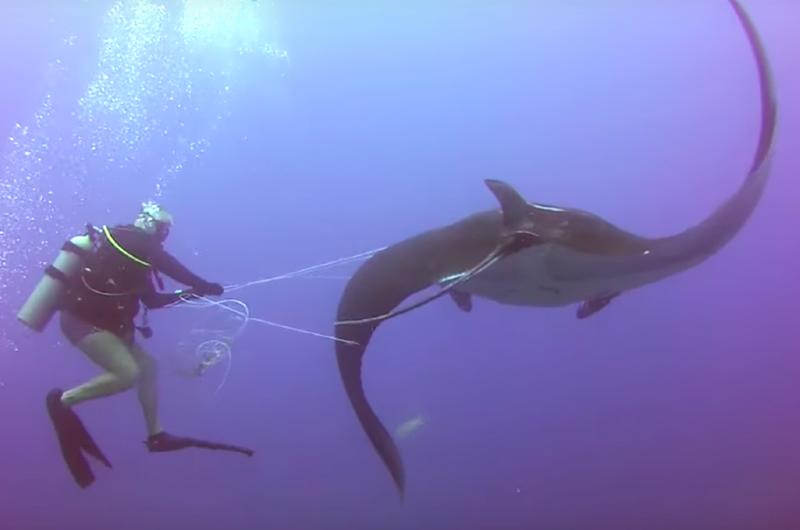
Needs Help
Entanglement
Many manta rays get tangled up in fishing nets. It happened so much in the past that conservationists believe the species might become extinct. Footage of the creatures being friendly around humans might help. Thanks to all the videos, manta tourism is now highly popular.
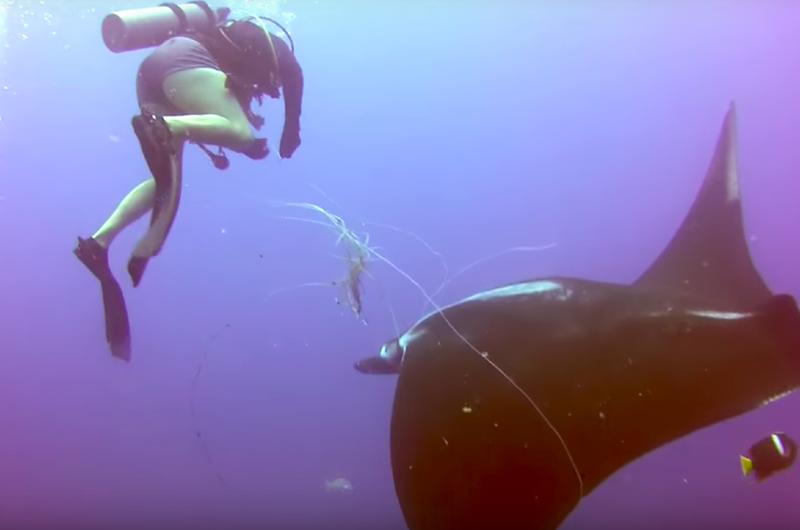
Entanglement
Tourism
Manta tourism can help raise awareness of the creature’s plight and even boost the local economy. Indonesia actually banned manta fishing and turned to tourism because it’s more profitable. One hunted ray might bring in $500, but live animal attractions earn about $1 million during the creature’s lifetime.
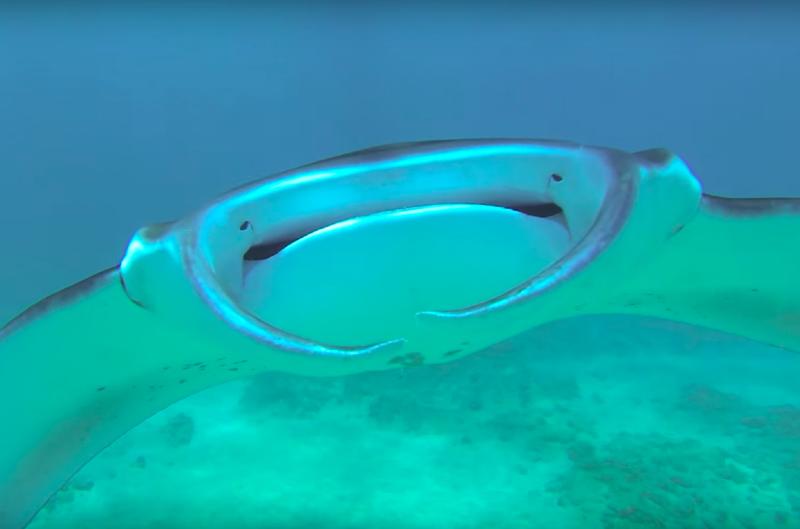
Tourism
Another Curious Creature
One unknown creature ended up causing mayhem in Wareham, Massachusetts. The police station got the worst of it because calls came in each day. People swore they saw a threatening-looking animal swimming around, but there was a bigger problem!
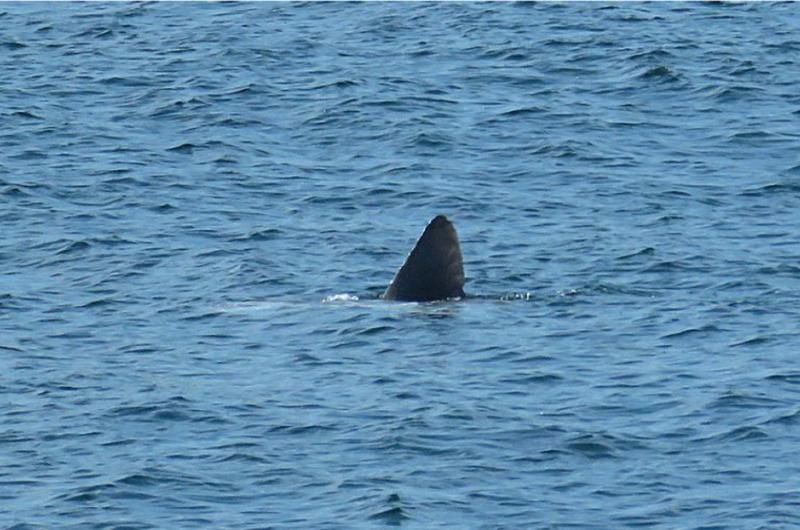
Another Curious Creature
The Worried Locals
Some callers claimed to have terrifying accounts, but others said the creature might be hurt. Garry Buckminster told people he got calls at his personal number at 6:30 a.m., and they kept coming. Though each one had varying tales, they all seemed concerned.

The Worried Locals
Similar Reports
While the calls were all different, each person said that the creature moved about strangely. It had jerky movements, and some thought it might be a shark or an injured seal. Regardless, they were all shocked by the truth.
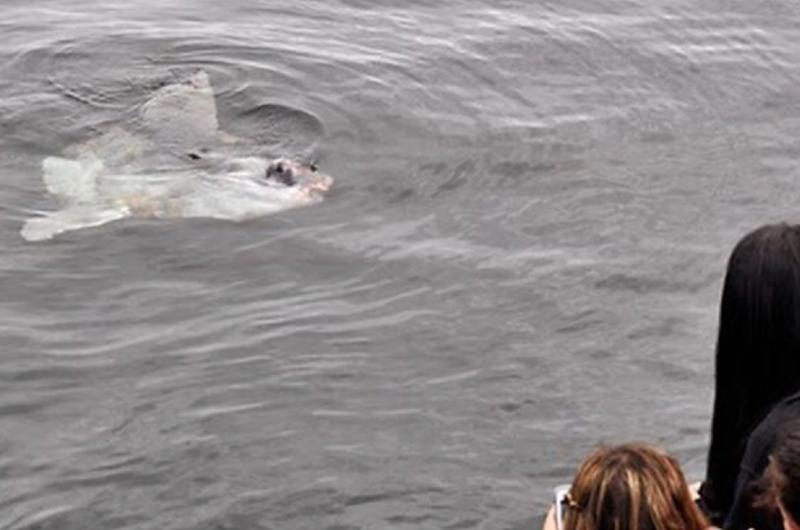
Similar Reports
Sending Detectives
Buckminster needed to solve the mystery soon, so he sent two police offers to search their cove. Soon, they saw the creature in the water. When they got closer, they saw it was a Sunfish!
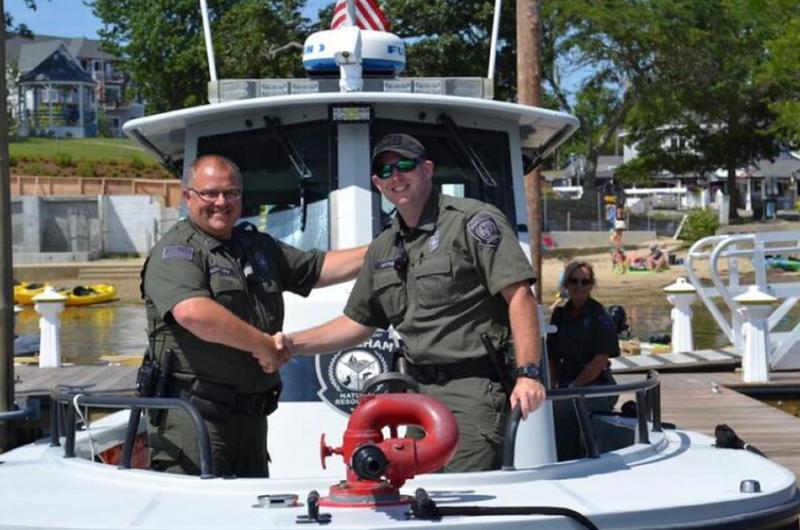
Sending Detectives
The Sunfish
They confirmed that this creature wasn’t suffering. That’s just how it swims, so if people saw it from far away, they might think it’s clumsy. Tourists continued to call, so the police had to issue a statement informing everyone about the Sunfish.
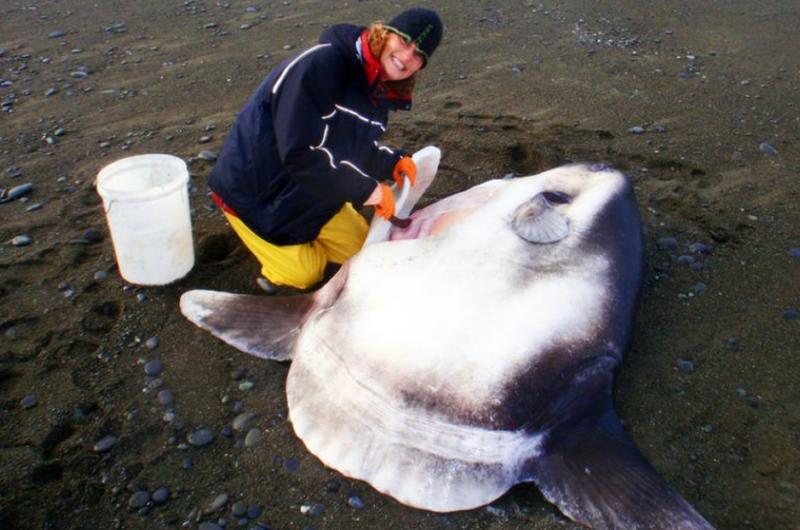
The Sunfish
Raising Awareness
As overfishing, climate change, and pollution affect the oceans more, conservation efforts are paramount. Though Joel’s and the officer’s encounters make great videos, they bring awareness to those species. As people see them more, they understand they’re friendly and sensitive.
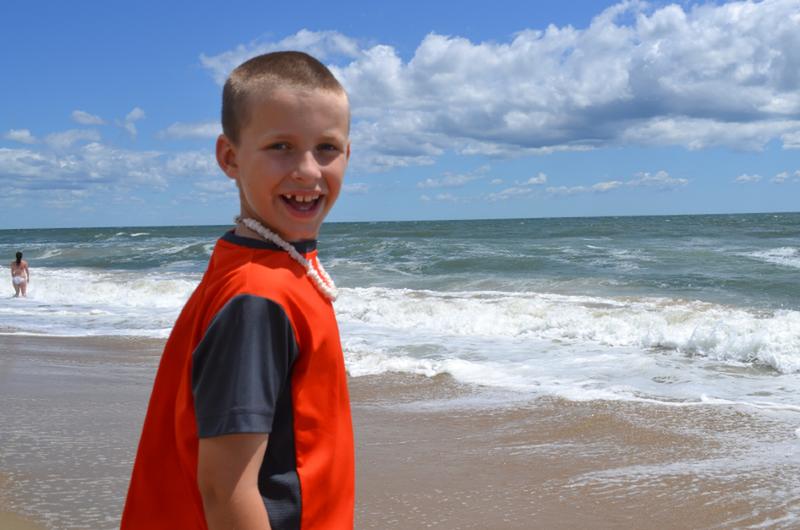
Raising Awareness
Beach Time
Hunter was just 7 years old and wanted to explore the beach. When the family arrived, he immediately raced to the waves. Overall, he wanted to collect shells, build sandcastles, and go snorkeling, which was a long list.

Beach Time
Great Start
That day’s weather was perfect, and there weren’t many tourists there. The boy felt that he had the beach to himself. Hunter’s mom then let him go further than normal into the water without realizing that it was a bad idea.

Great Start
Something New
Hunter dragged his feet in the sand and kicked the waves, wandering along the shore. Normally, snails, shells, and driftwood caught his eye, but then he noticed a flash of blue that was new to him.
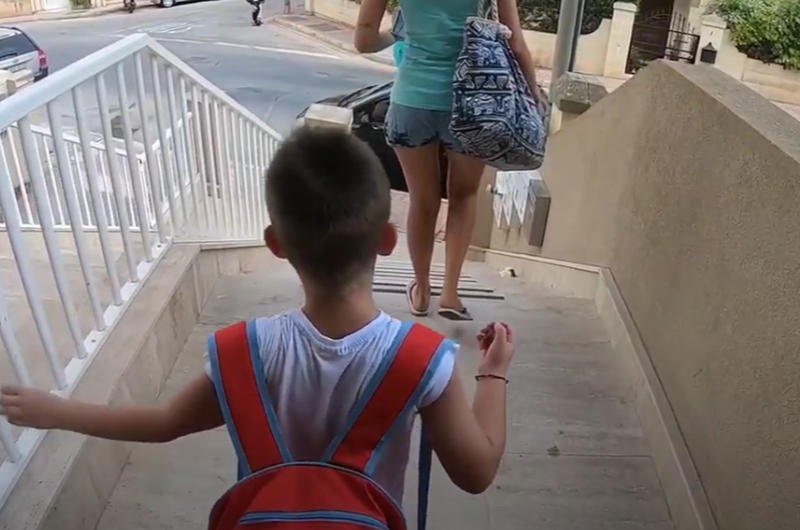
Something New
Questioning It
The boy inched closer with insatiable curiosity. It could be a pretty stone or seashell. Overall, Hunter liked reading books and was confident. Still, he worried that the item might be a piece of trash; then, he realized it was actually alive!
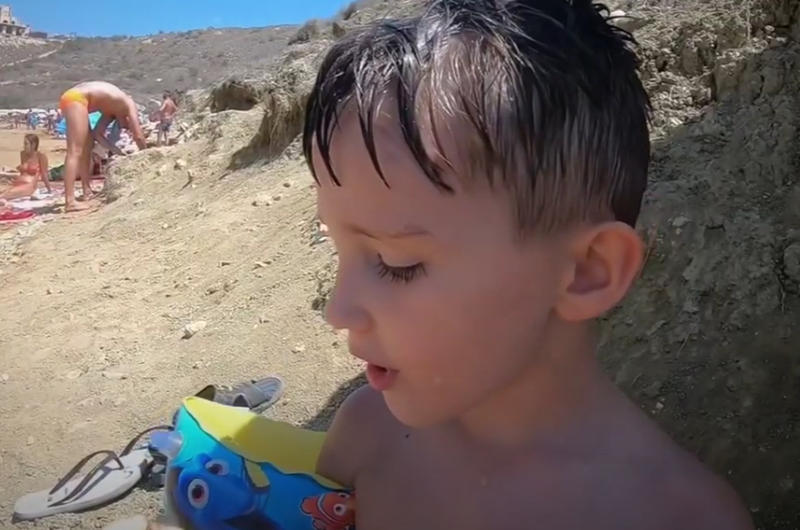
Questioning It
Very Strange
This creature almost looked like an alien and had tendrils. It twitched and swayed in the water, and Hunter knew he must show his parents. Did he discover a brand new species? Overall, his knowledge and love of nature saved his life that day!
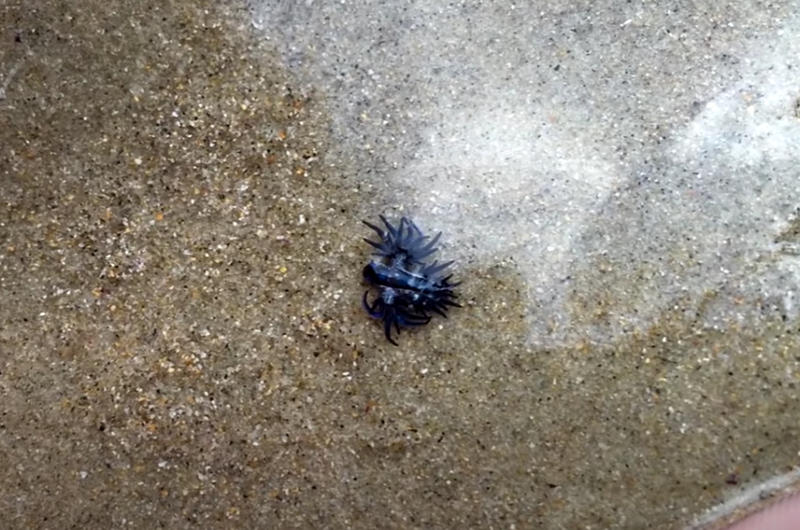
Very Strange
Being Careful
Hunter knew that dangerous things lived in the ocean. That’s why he scooped up the creature with a shovel and put it in his trusty bucket. Then, he immediately ran to his father to show him. Almost instantly, his dad was fearful!
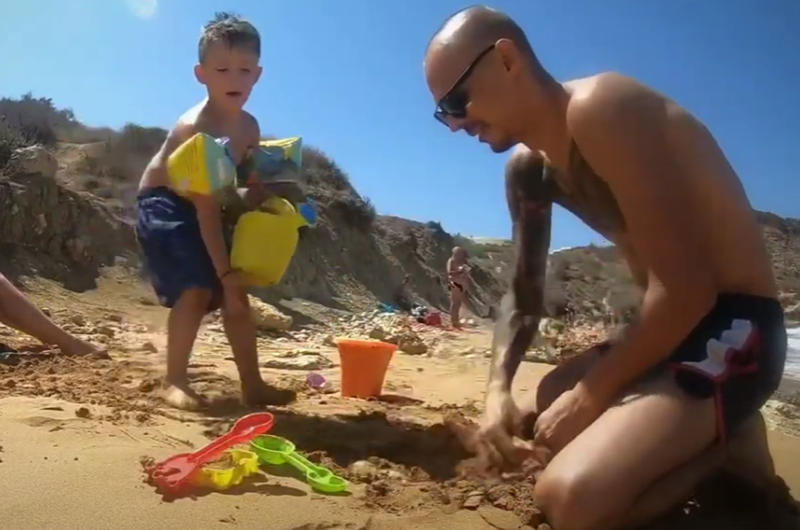
Being Careful
Terrified Father
His father told the boy to put it down fast, as though it was a bomb. Hunter’s joy drained from his face, and he set the bucket down with shaking hands. Something was very wrong, and then his dad said that he couldn’t swim today.

Terrified Father
Local Warnings
Hunter wanted desperately to know what was going on. Then, his father grabbed his phone and went to the local news. The creatures weren’t a new species. In fact, they were well-known and dangerous!
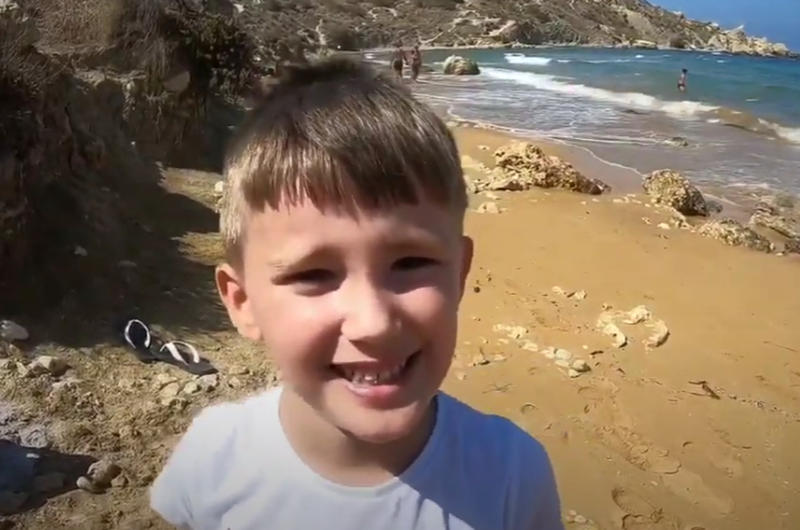
Local Warnings
Type of Slug
These sea animals are called blue dragon slugs. They weren’t to be touched because they were highly toxic. Even though Hunter was scared to find one, he was also curious. Then, his dad gave him the smartphone so that he could learn more.
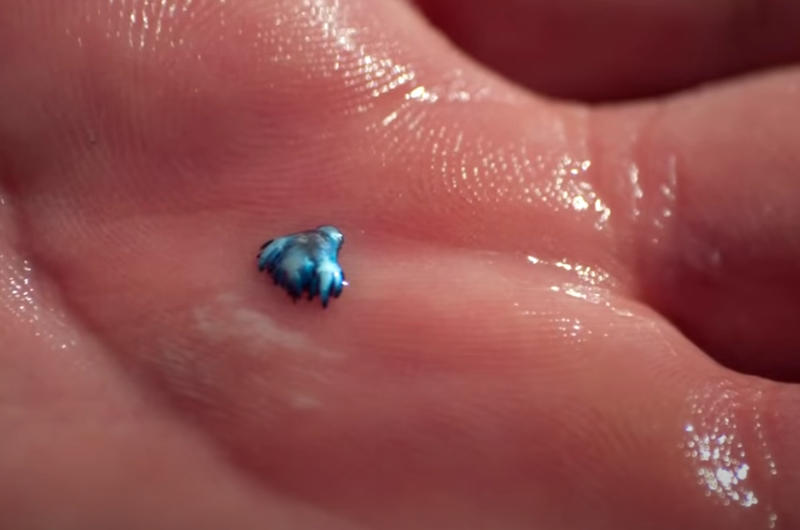
Type Of Slug
Better to Stay Safe
The local government had actually issued a warning for the area. That’s why no one was visiting the beach that day! This just shows you that education and awareness are paramount!
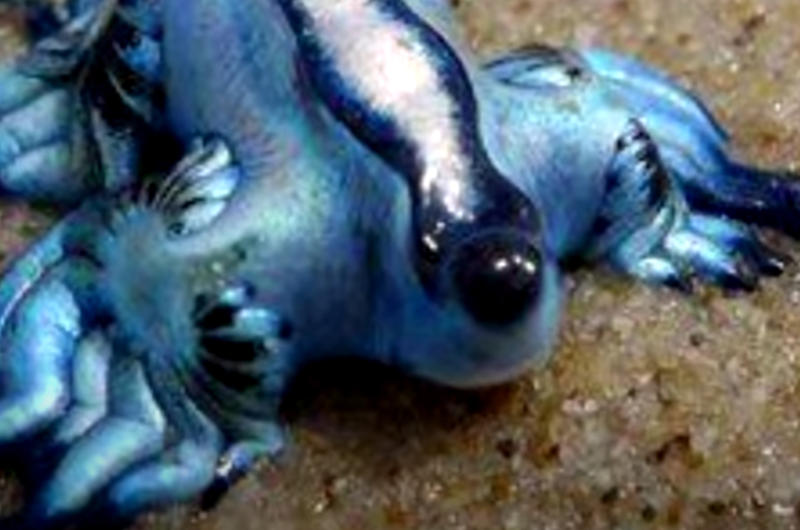
Better To Stay Safe
Strange Discoveries
Scientists are often stumbling into mysterious discoveries, and overwhelmingly these are accidental discoveries. Of course, while they are aware that these things can happen, we’re sure that it is still shocking every time something like this happens. Geologist James Smith from the British Antarctic Survey made an unexpected discovery while living in crazy conditions in Antarctica.
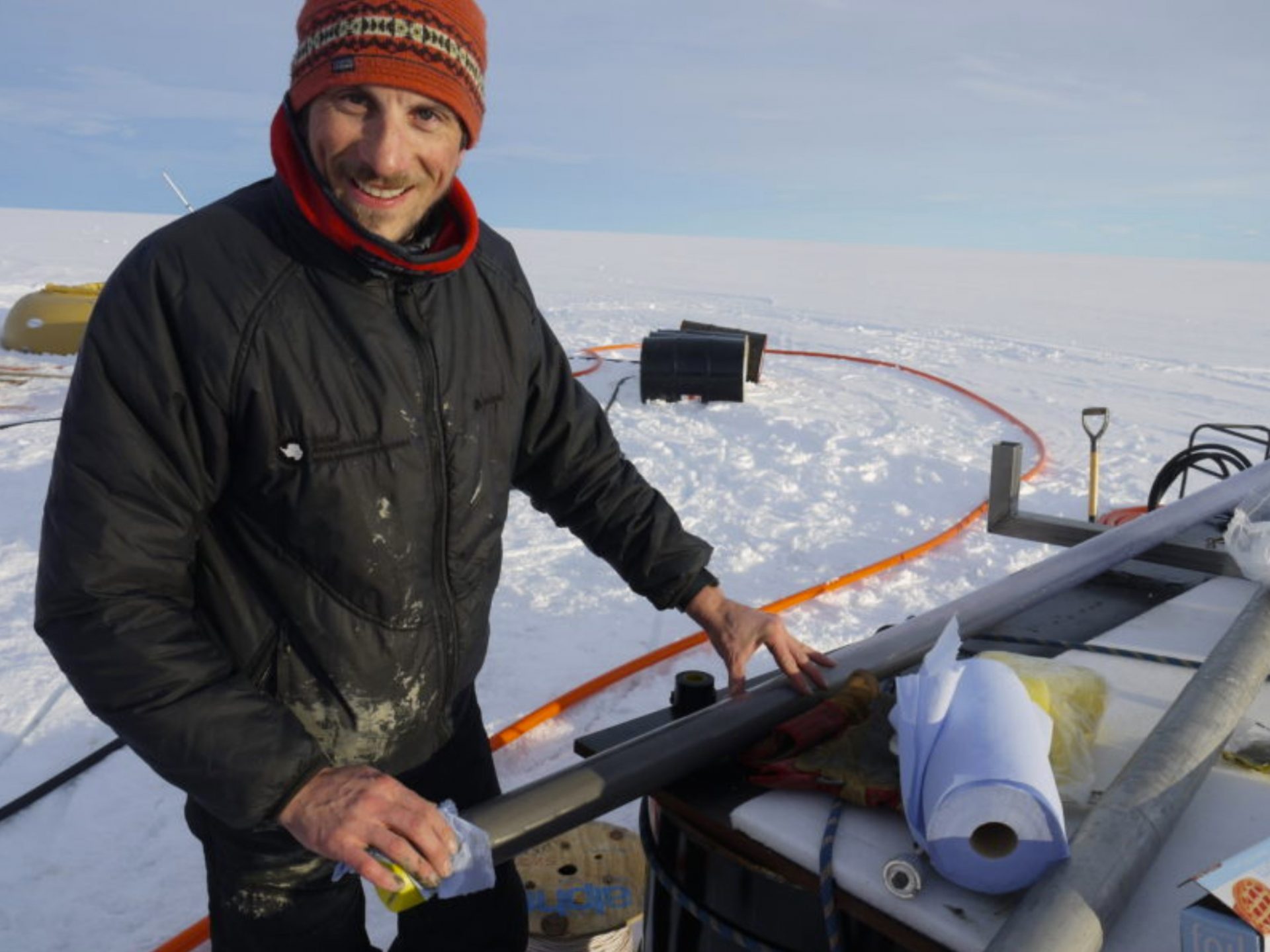
Strange Discoveries
The Location
While spending time in the middle of the Filchner-Ronne Ice Shelf, conditions are tough. Smith and his team were there enduring freezing cold temperatures, living in a tent, and eating dehydrated food. They were there to study the history of the floating shelf. The problem is that it was tucked away under a half mile of solid ice.
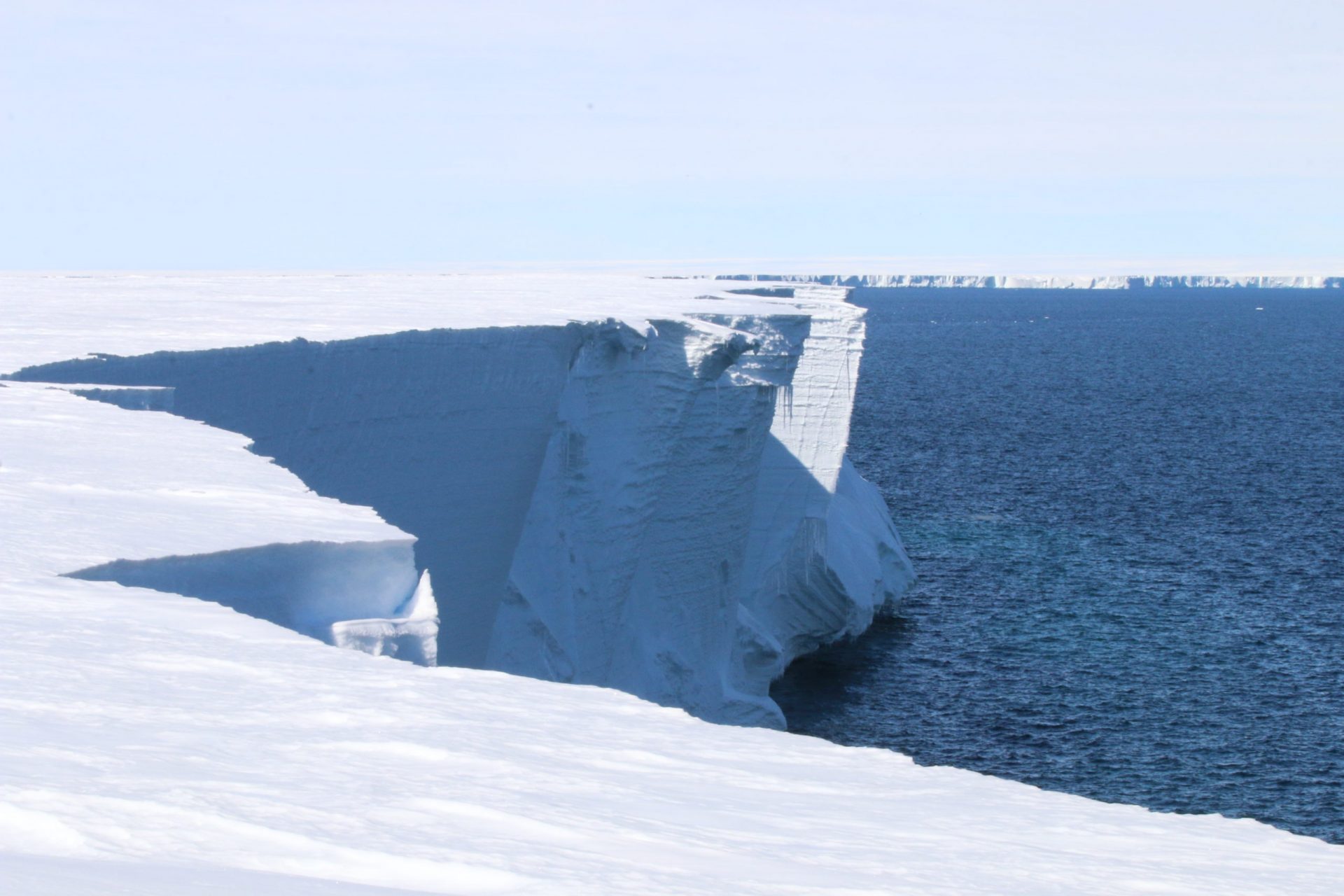
The Location
How To Get There
Smith and his team had to melt 20 tons of snow in order to make 20,000 liters of hot water that would help to to the shelf. They pumped the water through a borehole that was lowered down a pipe. They had to melt through the ice painstakingly inch by inch, and it took 20 hours to melt all the way through the shelf.
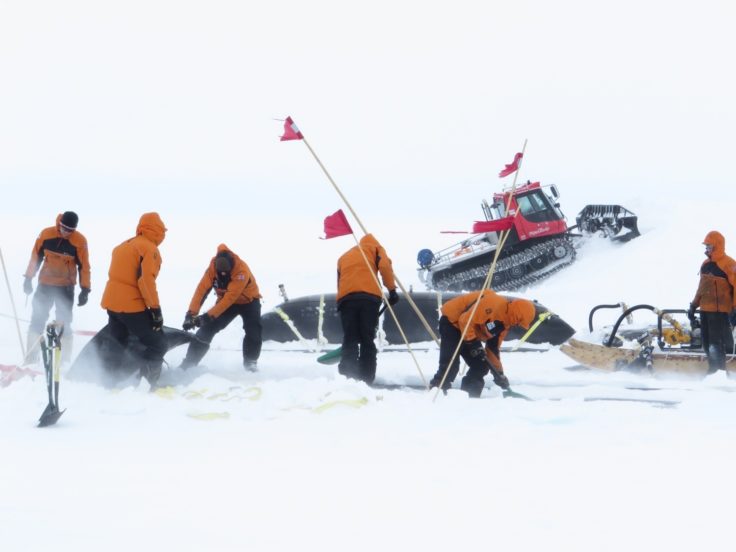
How To Get There
Collecting The Sediment
In order to get a sediment sample, the team had to lower an instrument that had a GoPro secured to it. However, the collector came out empty. Stumped, they decided to give it another shot. Once again, it came out totally empty. They were stunned and disheartened, since each attempt with the instrument took about an hour to complete.
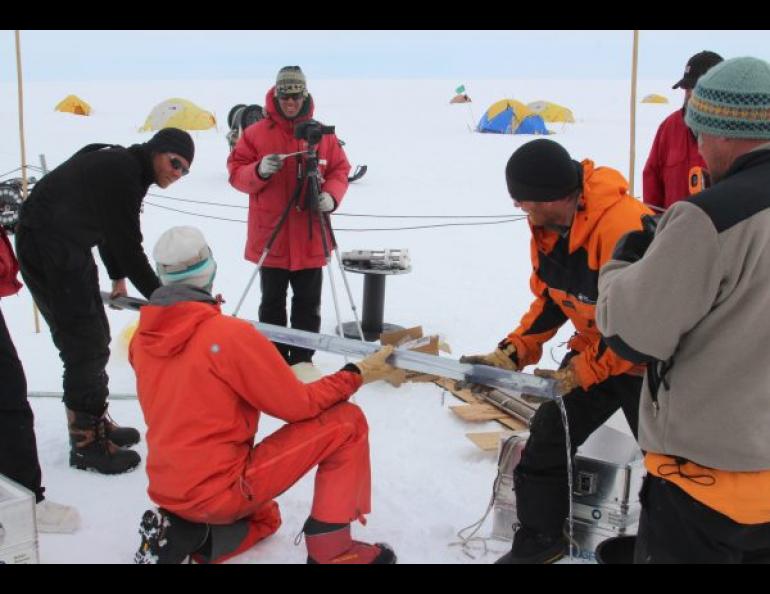
Collecting The Sediment
Feeling The Setback
Smith and his team went back to their camp, feeling let down from the day. He decided to watch the GoPro footage in order to try to get a sense of what was going wrong. It was only then that he discovered the glaring issue.
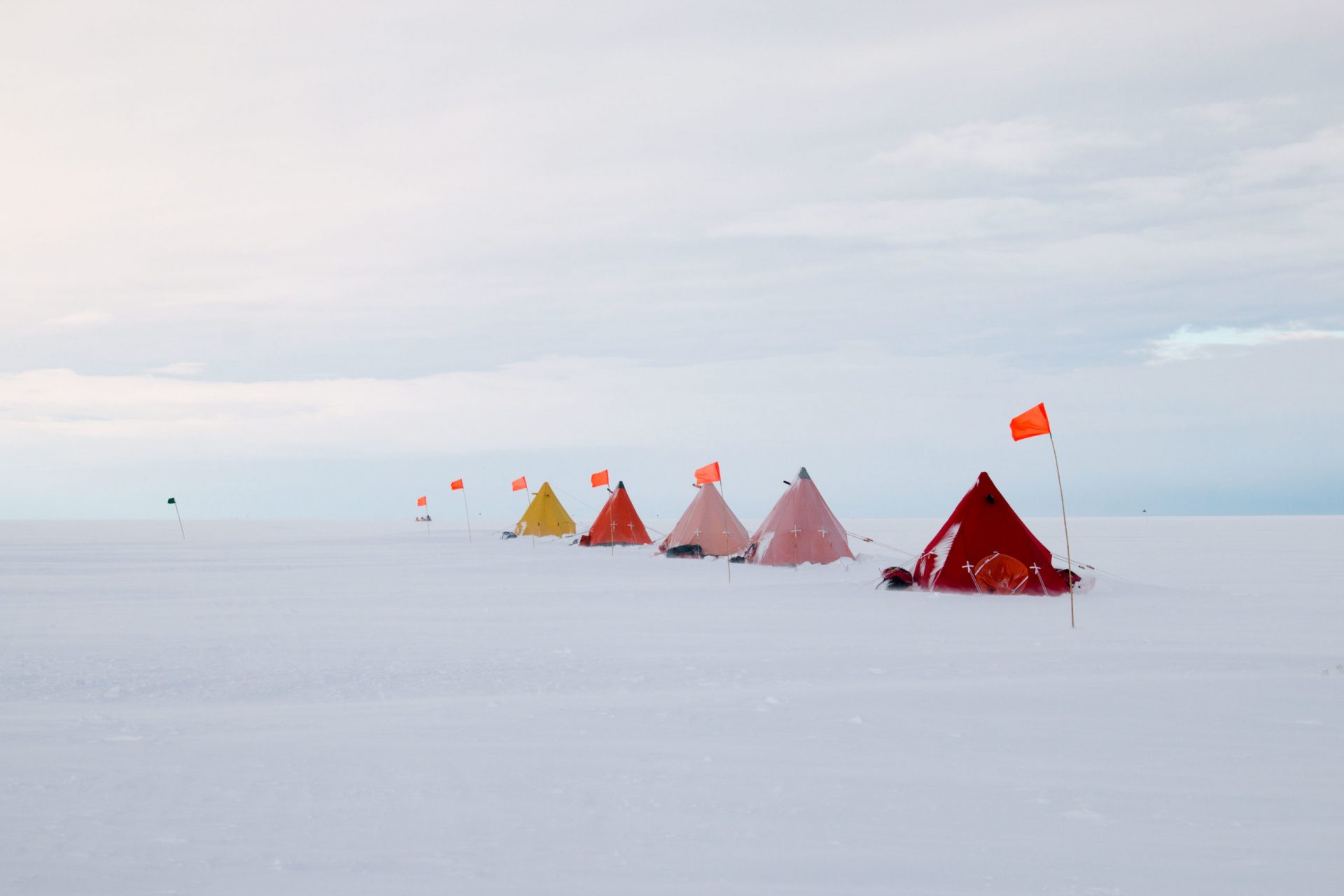
Feeling The Setback
What He Saw
The footage showed the descent through 3000 feet of bluish green ice which stops all of a sudden, revealing an opening of dark seawater. Then the camera’s footage showed about another 1600 feet before the seafloor is seen, which then shows lightly colored sediment, but the camera showed something else as well.
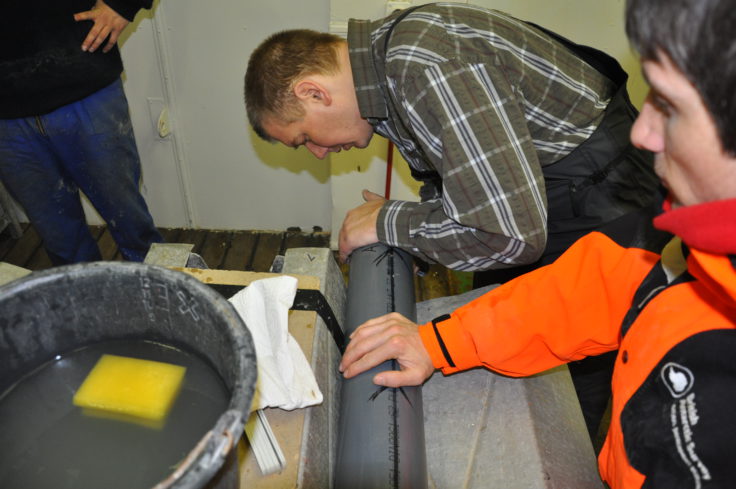
What He Saw
What Was Going On?
The camera continued towards the sediment but also showed something dark and unusual. The footage revealed what looked like a rock, which the camera hit and them tumlbed into the sediment. The camera was able to right itself and scan the rock, which then showed the geologists something totally unexpected. What was it?
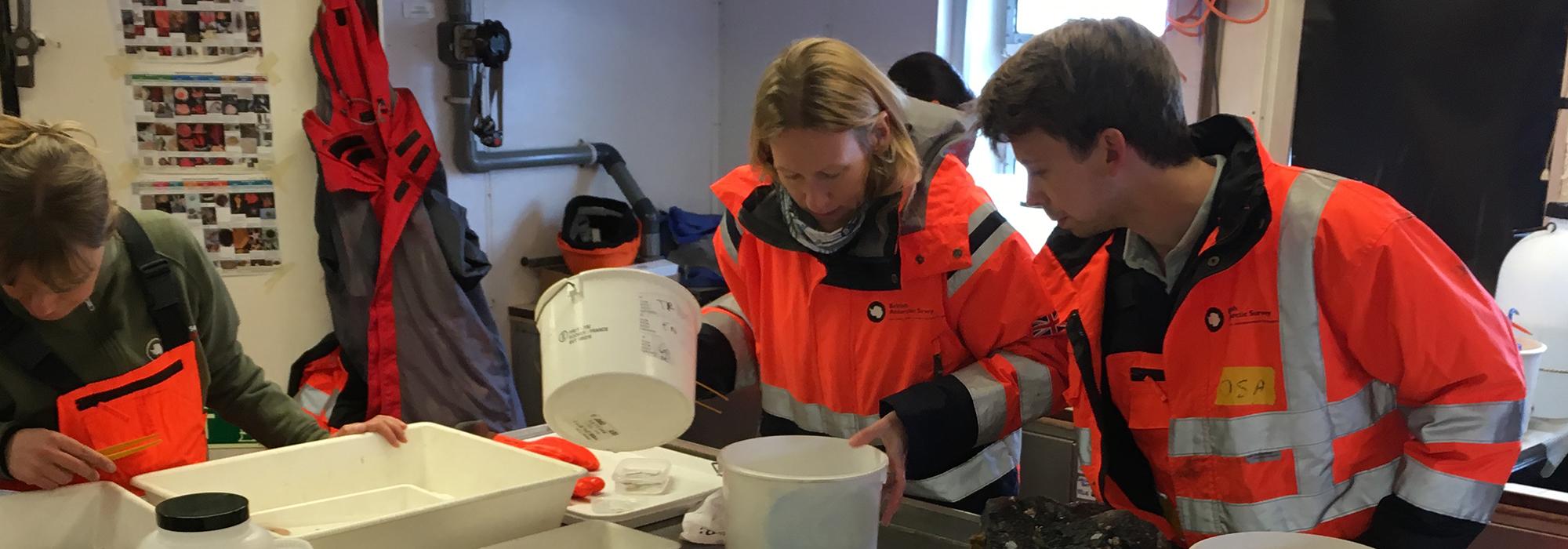
What Was Going On?
What The Footage Revealed
The camera footage took the scientists completely by surprise. What had originally seemed like a rock was not a rock at all. In fact, it was not only not a rock, but it was something that was completely improbable: it was a living thing. What on earth could this living thing be, and what was it doing there?
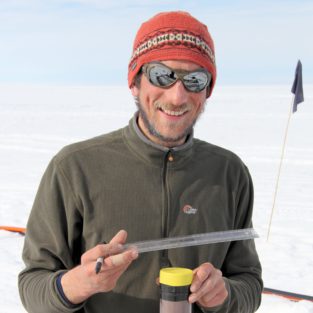
What The Footage Revealed
His Reaction
Smith was completely shocked by this discovery. He said: “It’s like, bloody hell! It’s just one big boulder in the middle of a relatively flat seafloor. It’s not as if the seafloor is littered with these things.” He was stunned that they happened to drill in the only place that wasn’t flat seafloor.
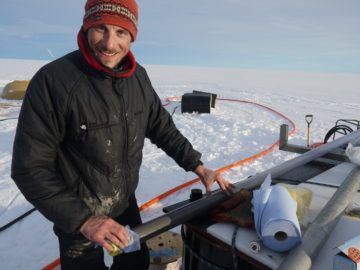
His Reaction
One In A Million
While this was unlucky in terms of their original research plan, the scientists were aware of the fact that they stumbled into a one in a million situation: finding a living thing in an environment that they had not expected to be supportive of life. While Smith was not a biologist, his college Huw Griffiths was.
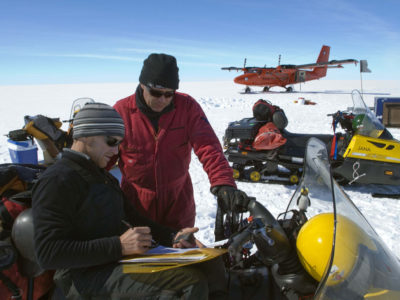
One In A Million
What Griffiths Saw
Griffiths then observed the footage and noticed a film on the rock-like thing, which he assumed to be a microbial mat, a layer of bacteria. There was an alien looking sponge and other stalked animals dangling from the “rock” while cylindrical sponges on the surface. There were also wispy filaments lining the rock.

What Griffiths Saw
So Far Away
This living thing they discovered was located 160 miles away from any possible sunlight, which would be the nearest edge of the shelf. It also means that it’s located hundreds of miles away from any potential food source, which would be a spot that could fuel an ecosystem with sunlight.

So Far Away
How It Works
These animals are considered to be living “sessile,” meaning they are stuck in one place. These sessile animals living on the deep sea floor need a steady supply of “marine snow” food. All living things in the water column above eventually die, and then they sink into the depths, decomposing along the way. As they float down, the tiny morsels that come off on the accumulate on the deepest of the seafloors.
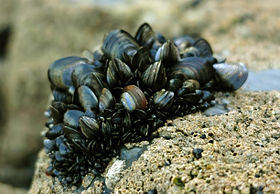
How It Works
Not Common
Once all of this happens, the ensuing detritus and dead animals become “marine snow.” However, the animals living on this particular Antarctic rock don’t live under a water column bustling with life. They live under a solid piece of ice. According to Griffiths: “The worst thing in a place where there’s not much food, and it’s very sporadic, is to be something that’s glued to the spot.” How were they surviving, then?
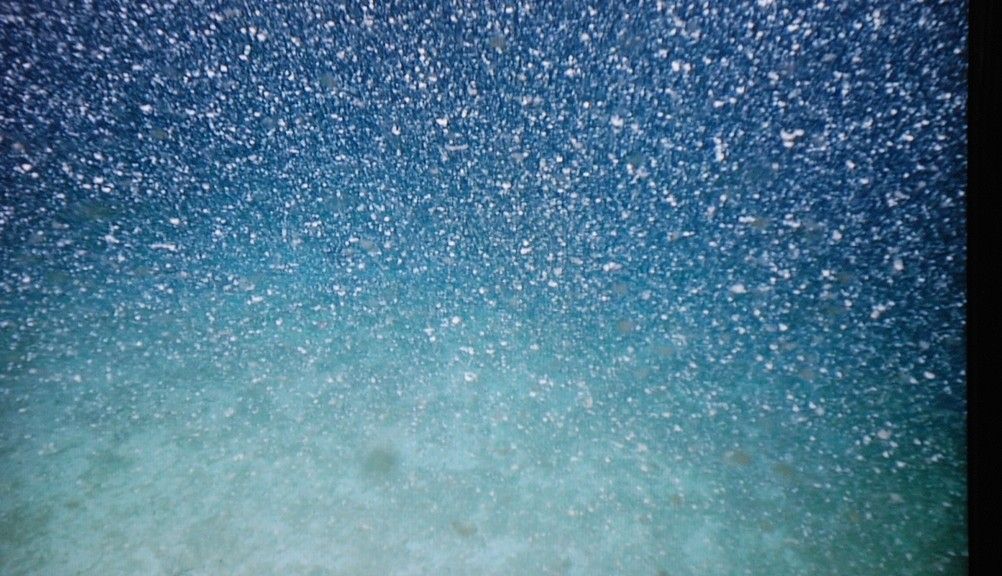
Not Common
What They Think
The scientists estimated that the drift of the marine snow has flipped in this situation. The food source moves horizontally instead of vertically. It is possible that organic matter is floating from regions as far as 390 and 930 miles away, moving sideways to reach these creatures and help them eat to survive.
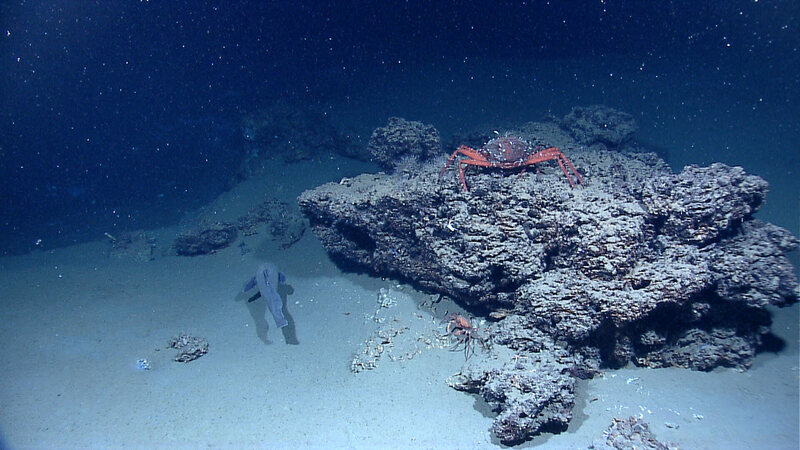
What They Think
More Questions
Since Griffiths and the team couldn’t say whether or not fish and crustaceans lived around the rock (none were seen in the footage) they couldn’t know the details. Griffiths asked: “Are they all eating the same food source? Or are some of them kind of getting nutrients from each other? Or are there more mobile animals around somehow providing food for this community?” Only another expedition could begin to explore the answers.
The Perfect Situation
It did look like the sedimentation around the rock is not heavy, which means the animals can’t get buried by accident. Griffiths said the rocks location is “kind of a Goldilocks-type thing going on, where it’s got just enough food coming in, and it’s got nothing that wants to eat them—as far as we can tell—and it’s not getting buried by too much sediment.”
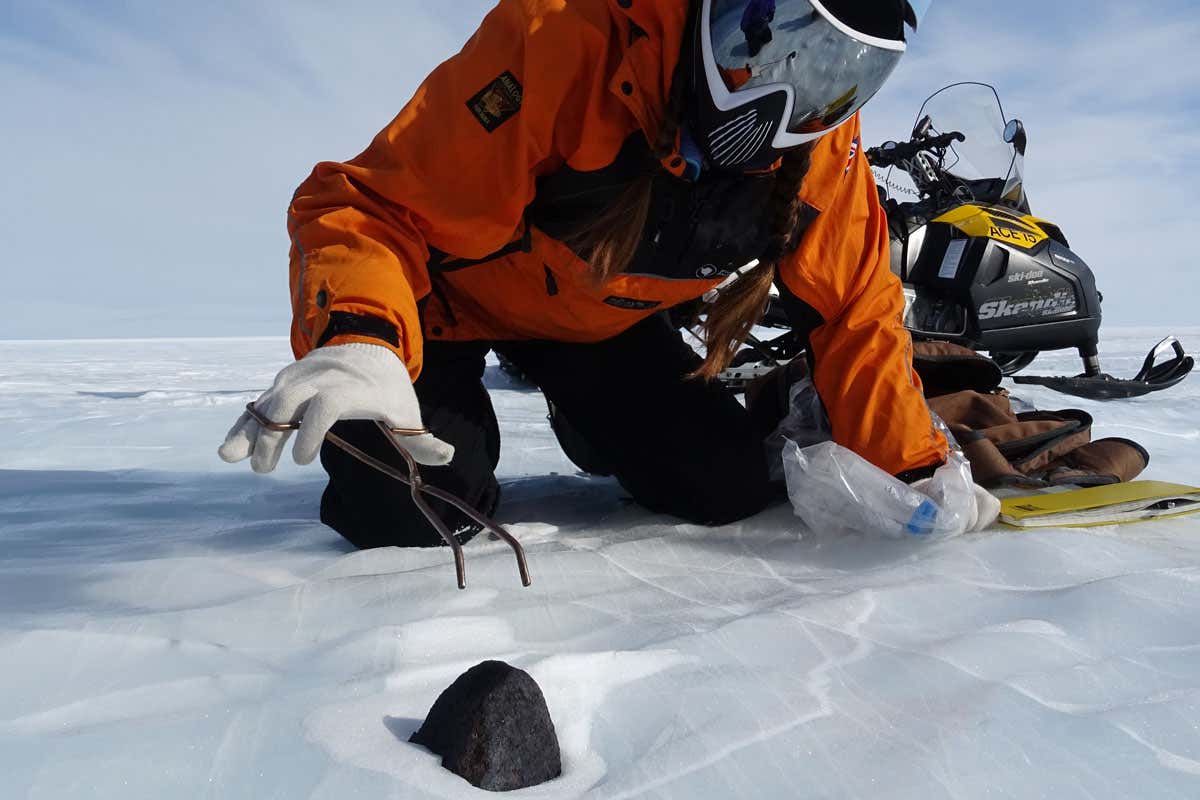
The Perfect Situation
How Did They Get There?
Griffiths and his team also couldn’t answer the question of how the creatures ended up there. He wondered: “Was it something very local, where they kind of hopped from local boulder to local boulder?” They wondered if alternatively the parents lived on a rock miles away and their sperm and eggs may have traveled through currents.
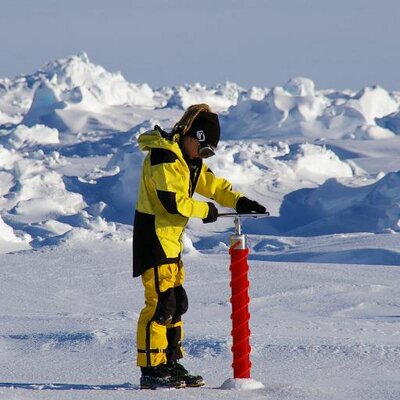
How Did They Get There?
No Specimens
Since Griffiths and his crew didn’t have any specimens to examine, they could not determine how old these creatures are. Sponges could live for thousands of years, so this could possibly even be an ancient ecosystem.
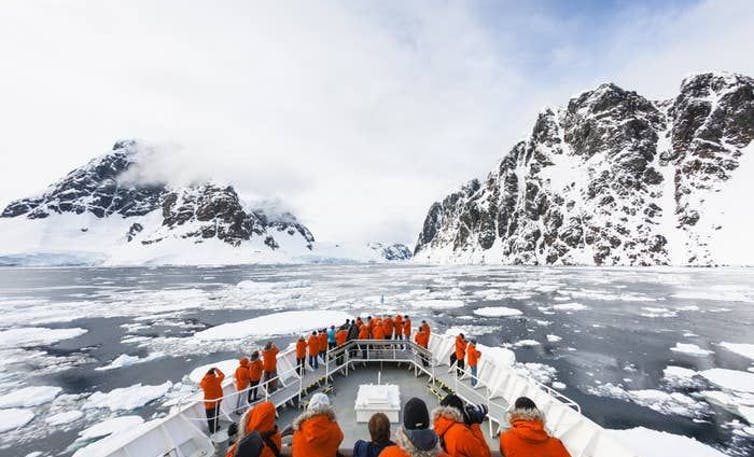
No Specimens
In Danger
While the researchers could go back and figure out some of these answers, there is a ticking clock. The rock that’s tucked under half a mile of ice is all at risk of our ever-warming planet. Griffiths says: “There is a potential that some of these big ice shelves in the future could collapse and we could lose a unique ecosystem.”
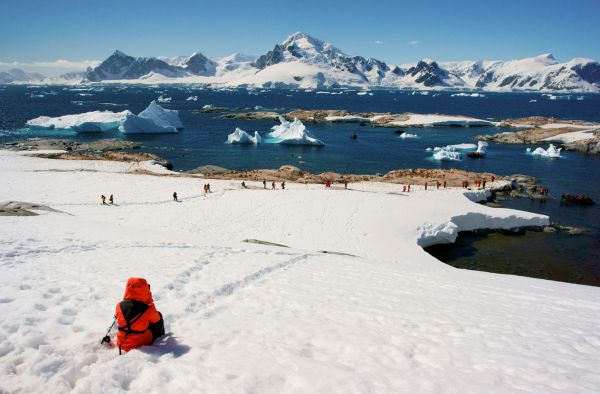
In Danger



